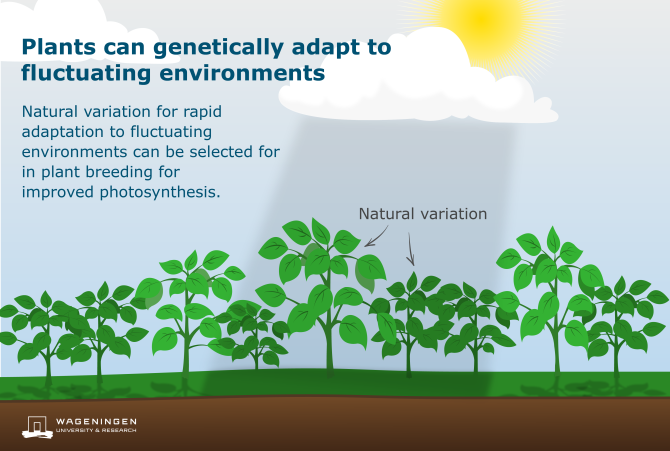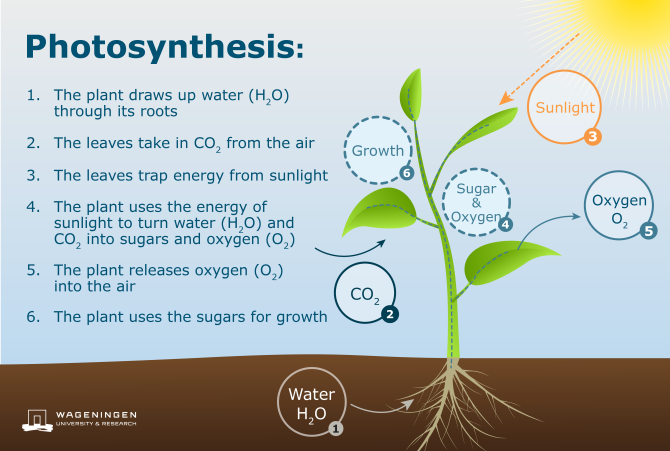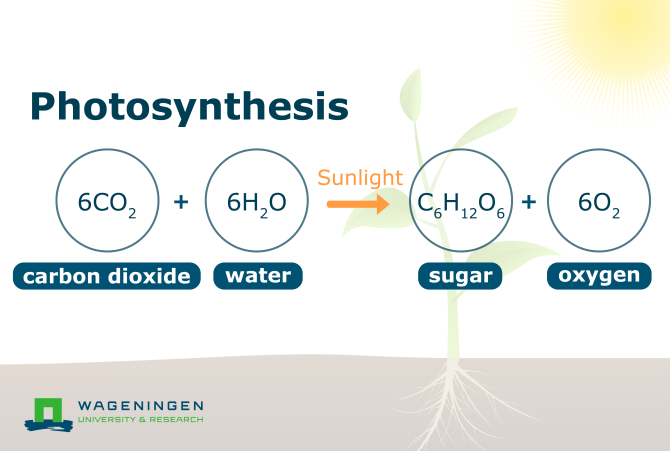
Dossier
Photosynthesis
Plants use sunlight to produce their own nutrients and energy: photosynthesis. If we want to keep the planet and its growing population running in a sustainable way, we will need plants to produce far more food, energy and applicable biomass than they do now. Photosynthesis, the green engine of life on Earth, needs tuning.
Photosynthesis 2.0 programme
How are we going to feed 10 billion people by 2050 while combating and mitigating the effects of global climate change? The world will need to double crop yield to give everyone food security and enable a sustainable industrial base. This will require a revolution in agriculture. Such a revolution can be provided through technology that focuses on re-designing the engine of biological productivity – Photosynthesis.
To realize this we need to embark on an large-scale international research endeavour bringing together Europe’s best scientist. For this, we have launched the Photosynthesis 2.0 Programme, an initiative which already is supported by 51 universities, research institutes and international initiatives from 17 EU-Member States.
Join us!
To carry out this 10 year research project, we need substantial funding from both national and international public bodies, as well as from the private sector. Join us and invest in this programme to become part of the Next Green Revolution!
Participate in Photosynthesis 2.0:
- Unfortunately, your cookie settings do not allow videos to be displayed. - check your settings
What influences the efficiency of photosynthesis?
“Currently, photosynthesis by plants is probably optimal for a wild, natural situation, but may be optimised for a crop cultivation setting,” says Mark Aarts, personal professor at the Laboratory of Genetics of Wageningen University & Research. “It is a delicate and yet rather aggressive process, involving potentially dangerous energy fluxes, which includes many protective mechanisms to keep this process under control. This is probably best for natural conditions in the field. Crops however are often grown under more controlled conditions, whether in the field or in greenhouses. This means that they might be able to do without some of the protective mechanisms, especially if they pose a limit to production," says Aarts.
Under optimal conditions, the differences in the efficiency of photosynthesis are small. However, stress such as excessive cold, heat or drought can bring out substantial differences in efficiency, and this allows for selection. The current research is carried out on the model plant Arabidopsis, or thale cress, because all its genes have been mapped and their DNA sequences are exactly known.
What if we could improve photosynthesis?
In agriculture photosynthesis is an underachiever. We just grabbed the ancestors of our current crops from the wild and put them into our fields. These plants had never the time to adapt to their new environment and improve photosynthesis. Models show that photosynthesis in crop plant could be up to five times more efficient. And we only need to double its efficiency for food security!
By increasing the efficiency of photosynthesis in crop plants, we can dramatically boost agricultural yield. This will allow us to produce enough protein for food en feed purposes to secure future food production. And at the same time, we can produce enough biomass to replace our fossil economy by a bio-economy which will stop the release of fossil carbon into the atmosphere. Also, increasing agricultural productivity will significantly contribute to re-capture CO2 from the atmosphere.
Optimizing photosynthesis is possible
Optimizing photosynthesis is complicated, and thus difficult, to find the genetic component in the variation in photosynthesis. But research has shown that it is possible.
Natural genetic variation of photosynthesis
Scientists from Wageningen University & Research Led by Mark Aarts and Jeremy Harbinson, have found natural genetic variation for photosynthesis in plants and are unravelling it to the DNA level. As a result it should be possible to breed crops that use photosynthesis more effectively in the future, increasing their yield and enabling them to capture more CO2 from the air in the soil.

140-step process
The breakthrough, "Improving photosynthesis and crop productivity by accelerating recovery from photoprotection", published in the journal Science, lead by researcher Prof Stephen Long, based at the University of Illinois and the University of Lancaster, shows decades of research into the 140-step process by which plants convert sunlight energy into food revealed specific "inefficiencies in crops". There are bottlenecks holding up the conversion of sunlight energy into food. Long and his team tackled one of those bottlenecks. Which led to increased yield in an experimental crop by 15%.
Improving efficiency by adding genes
Christine Raines, Professor of Plant Molecular Physiology at the University of Essex, worked together with Rothamsted Research and the Universitiy of Lancaster on improving the efficiency of photosynthesis, by adding genes from a grass called stiff brome. The new GM wheat was found to assimilate carbon dioxide better than conventional wheat and produced up to 40 % more yield. This research (Genetically modified "superwheat" could boost yields by 40%) was done in a glass house trial. Field trials are expected in 2017.
What needs to be done?
We know it is possible to improve photosynthesis, but we still need to do research to explore and exploit its full potential and make it work in all major crop varieties on a global scale.
We need to design and develop our “crops for the future”, combining increased yield with improve resource use efficiency: less use of water, minerals and energy. Also, make these crops climate-proof! And we need to make these crops available on a global level.
Join our programme and contact our expert!

